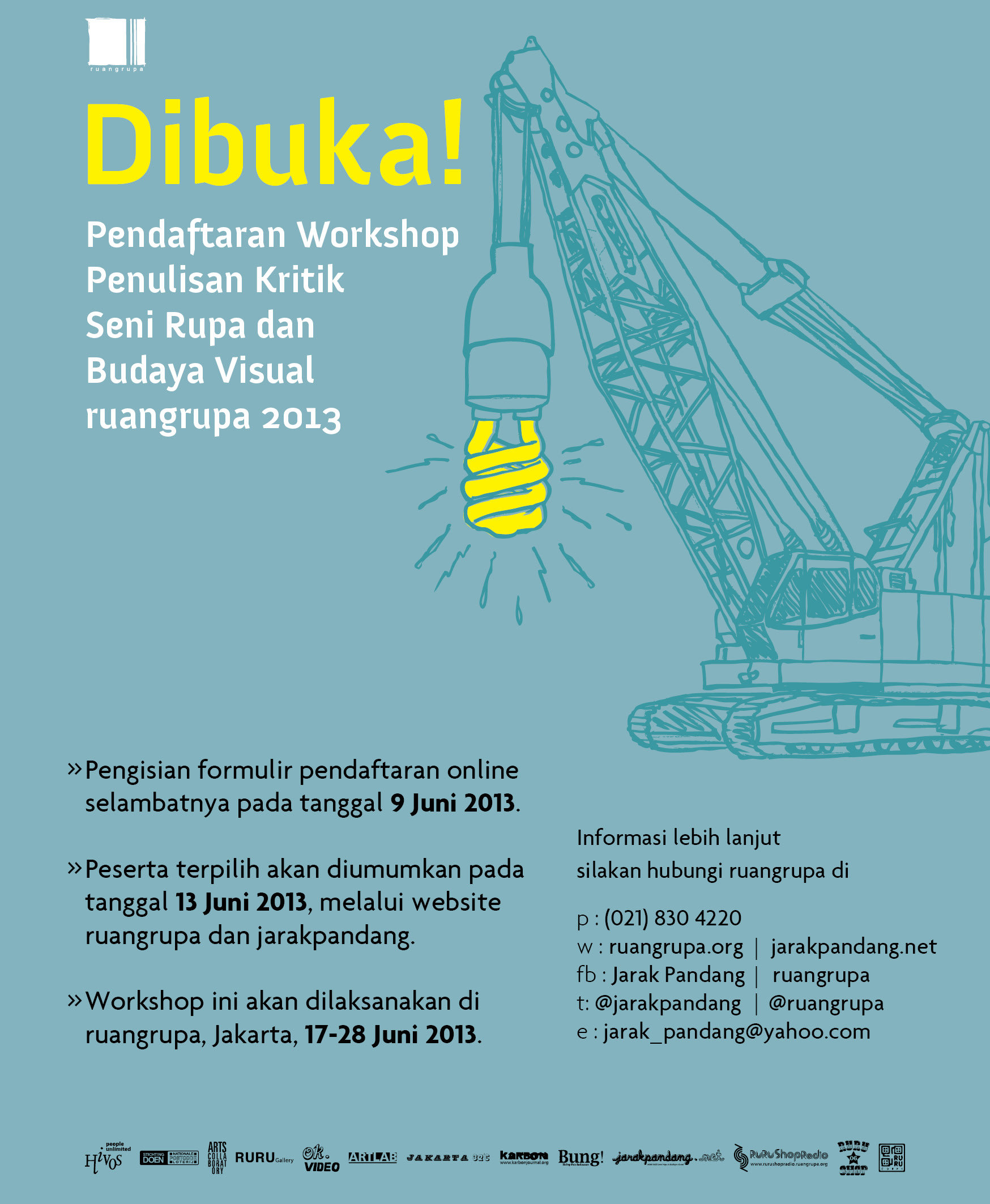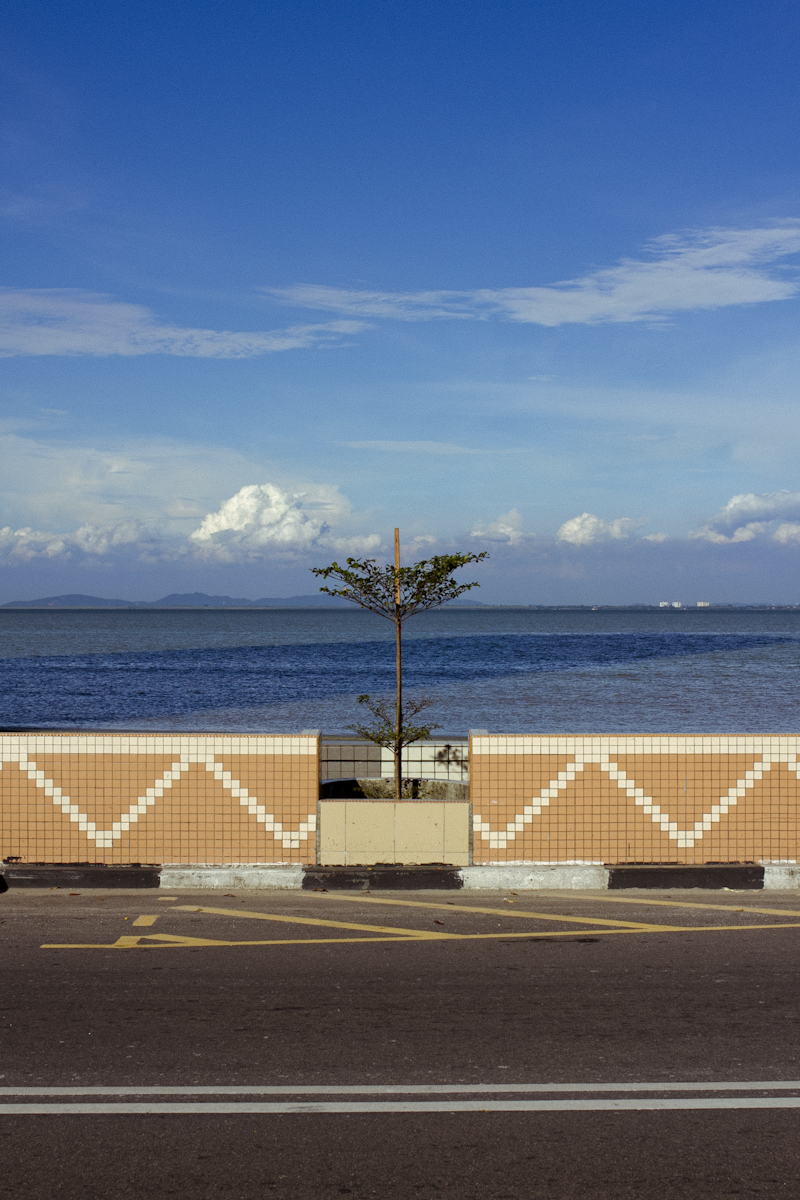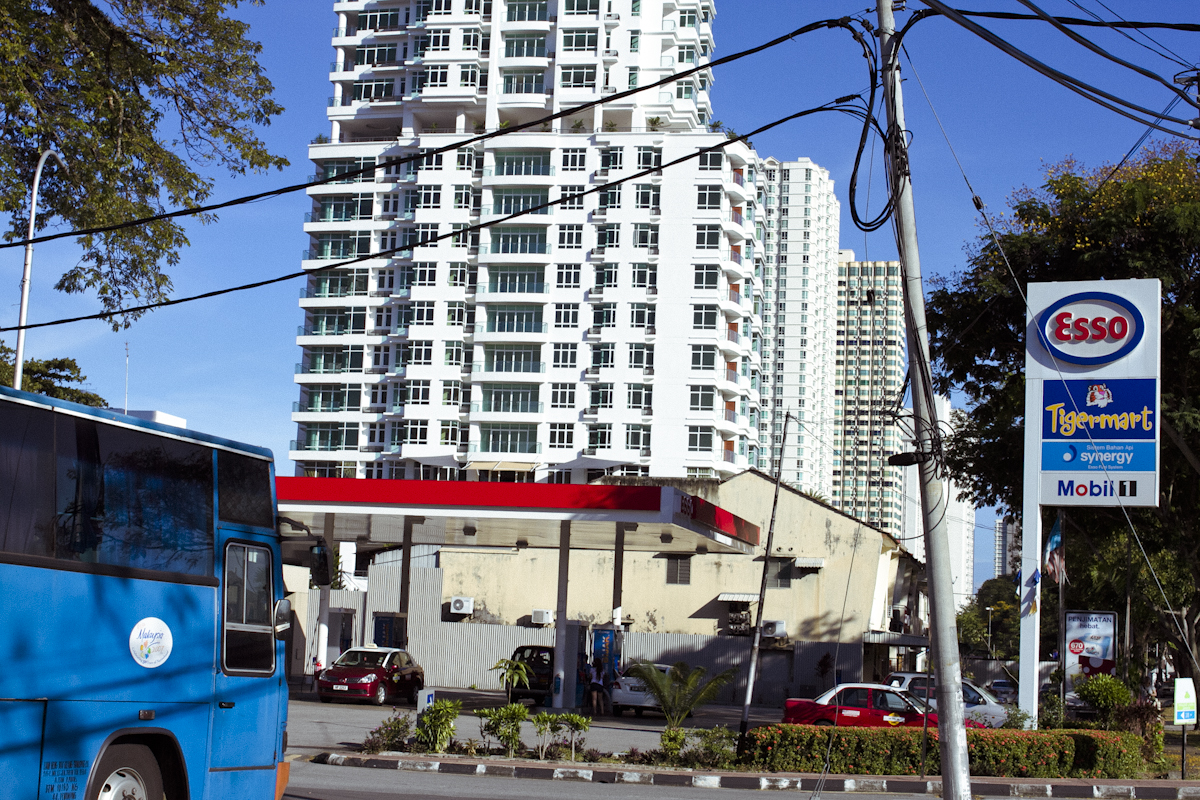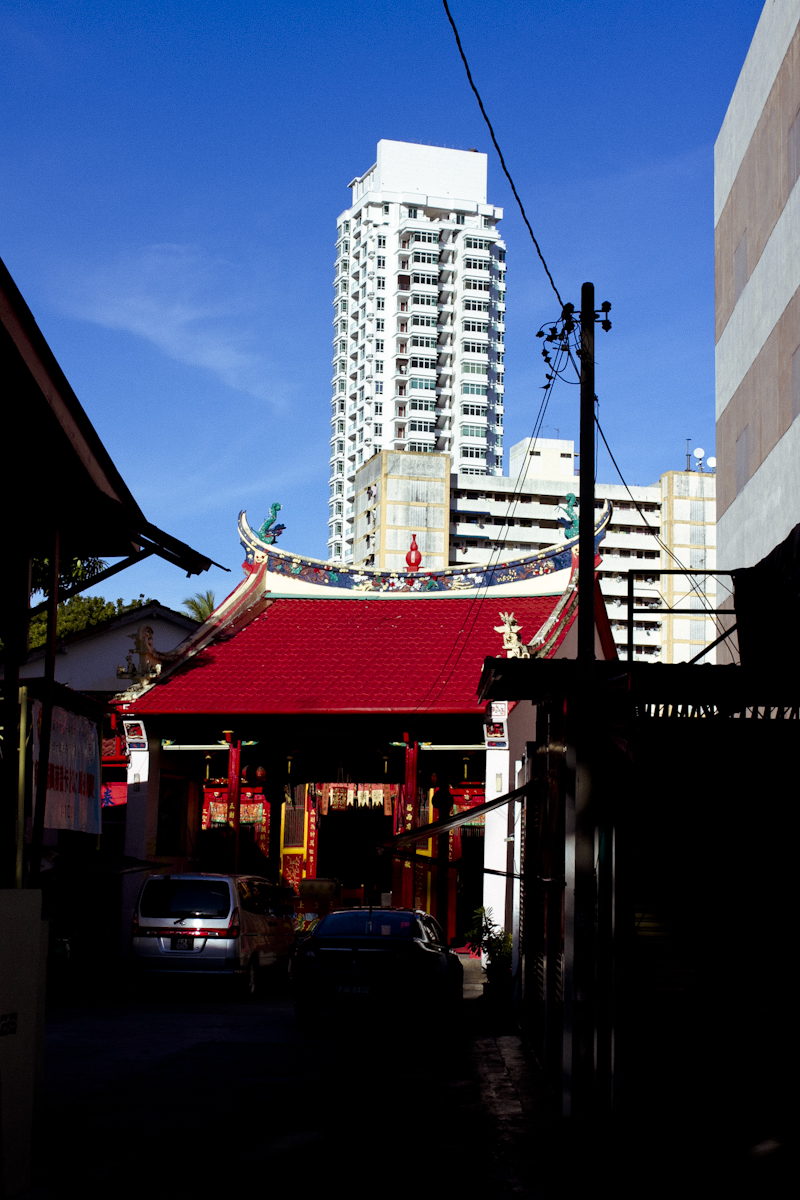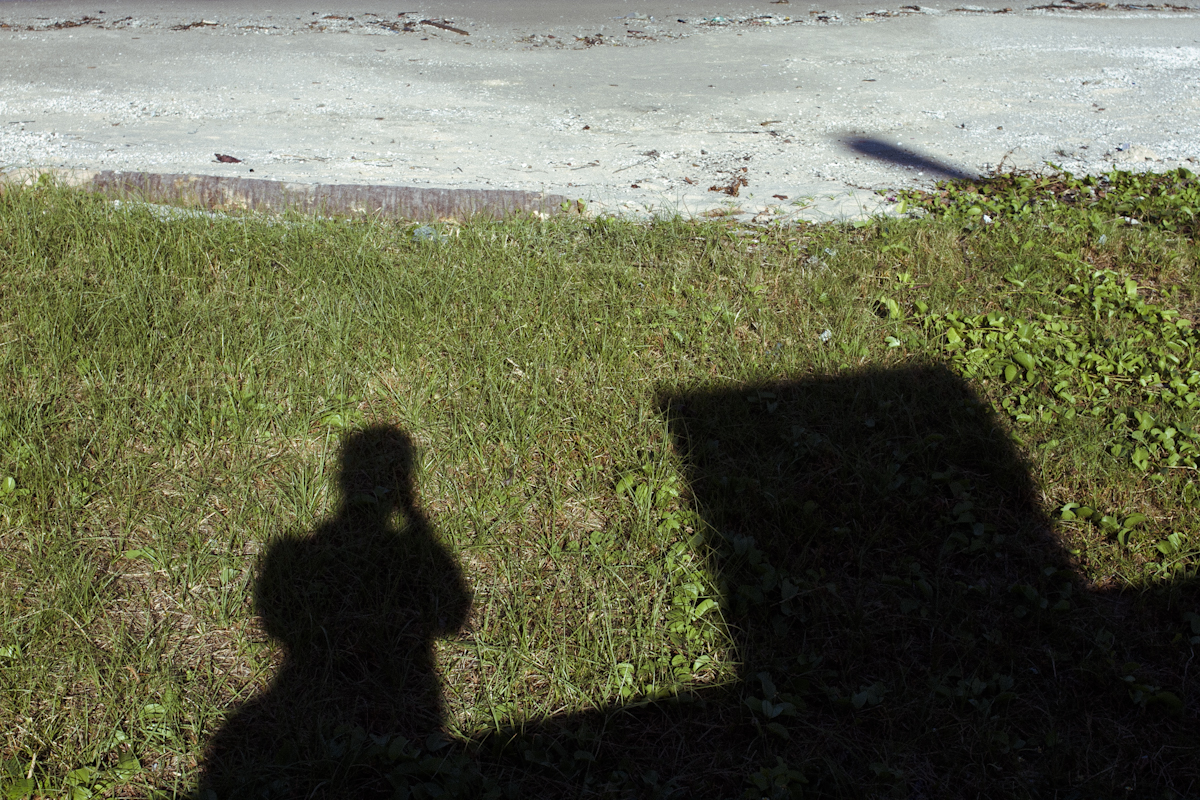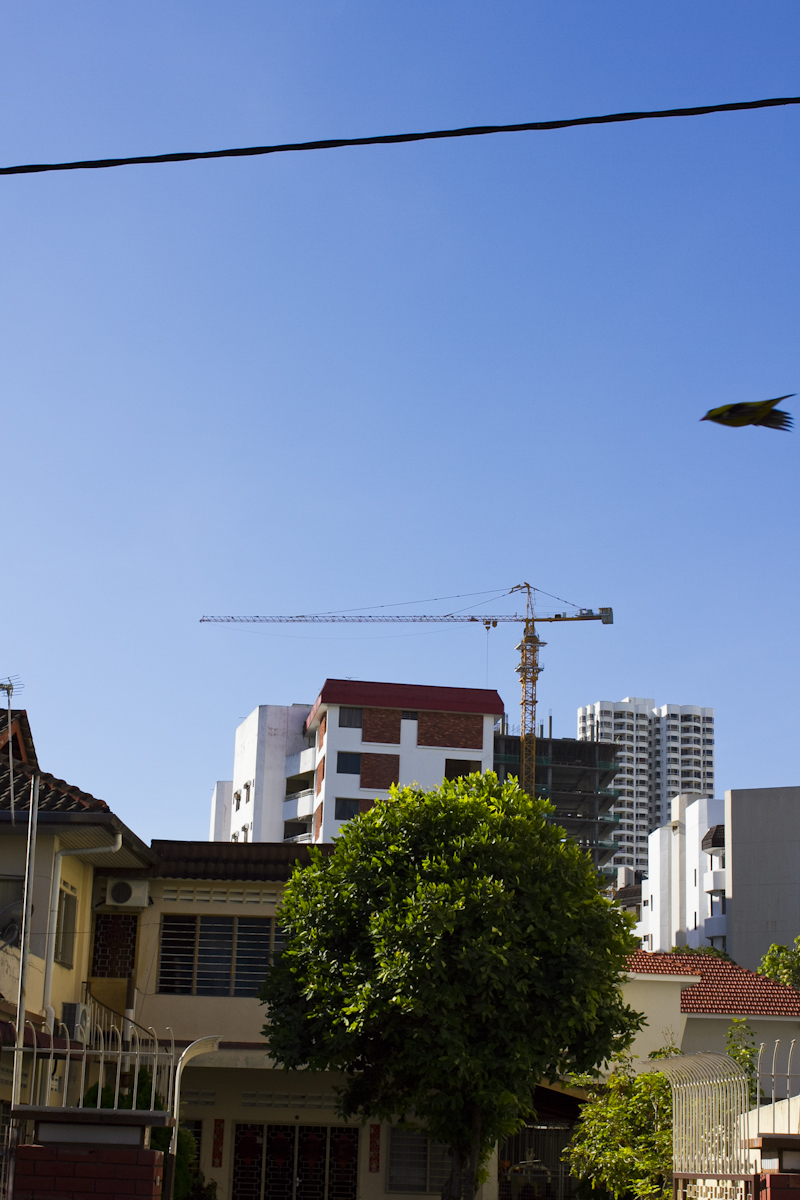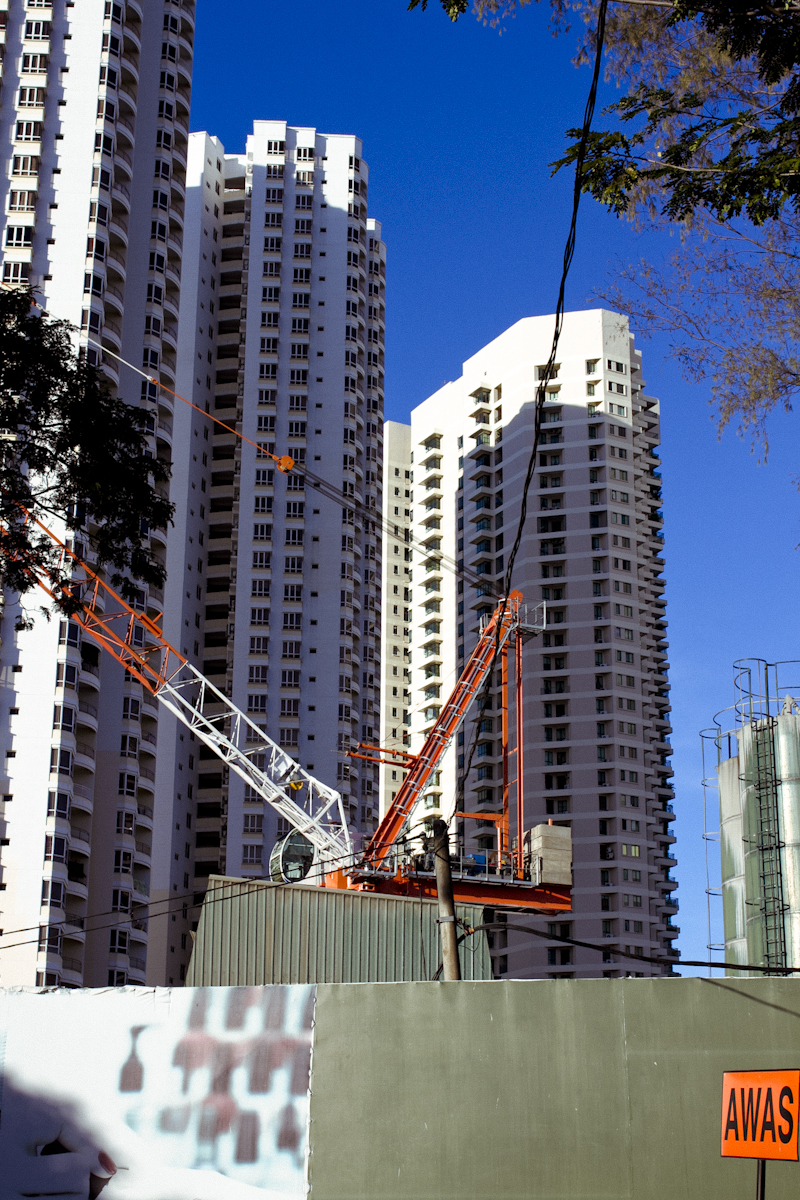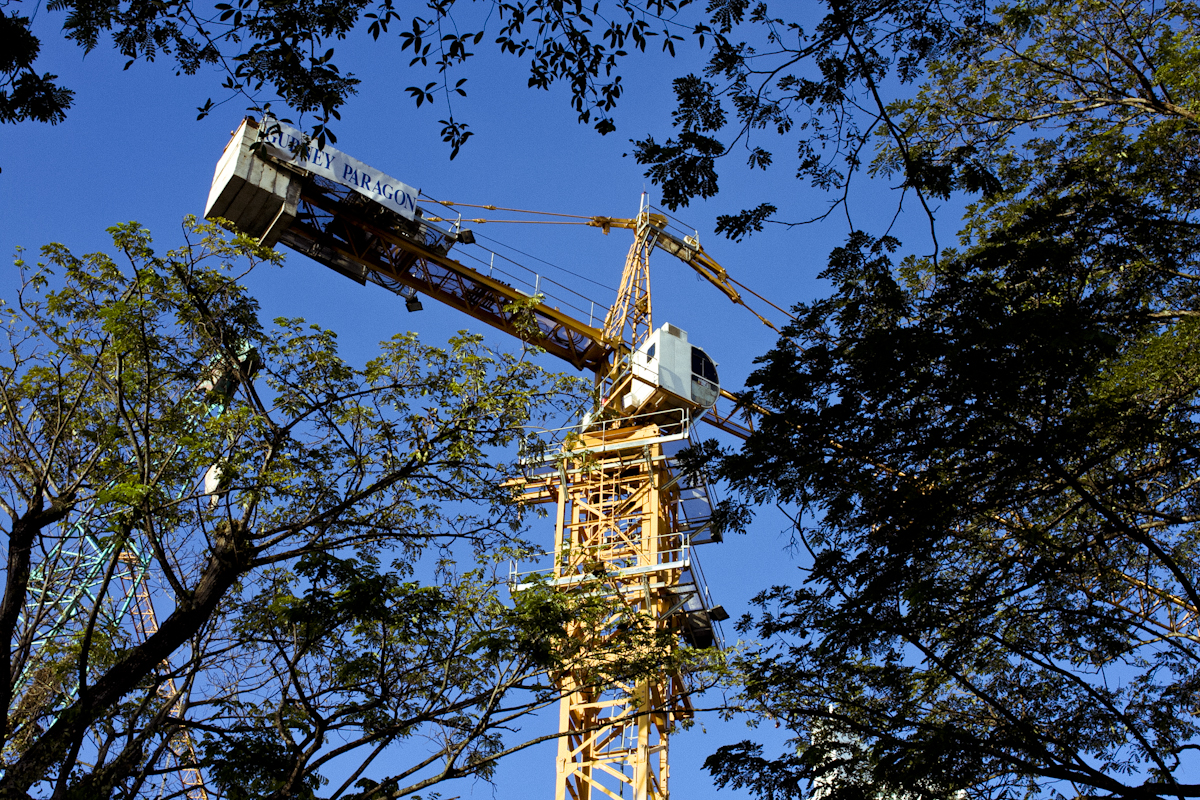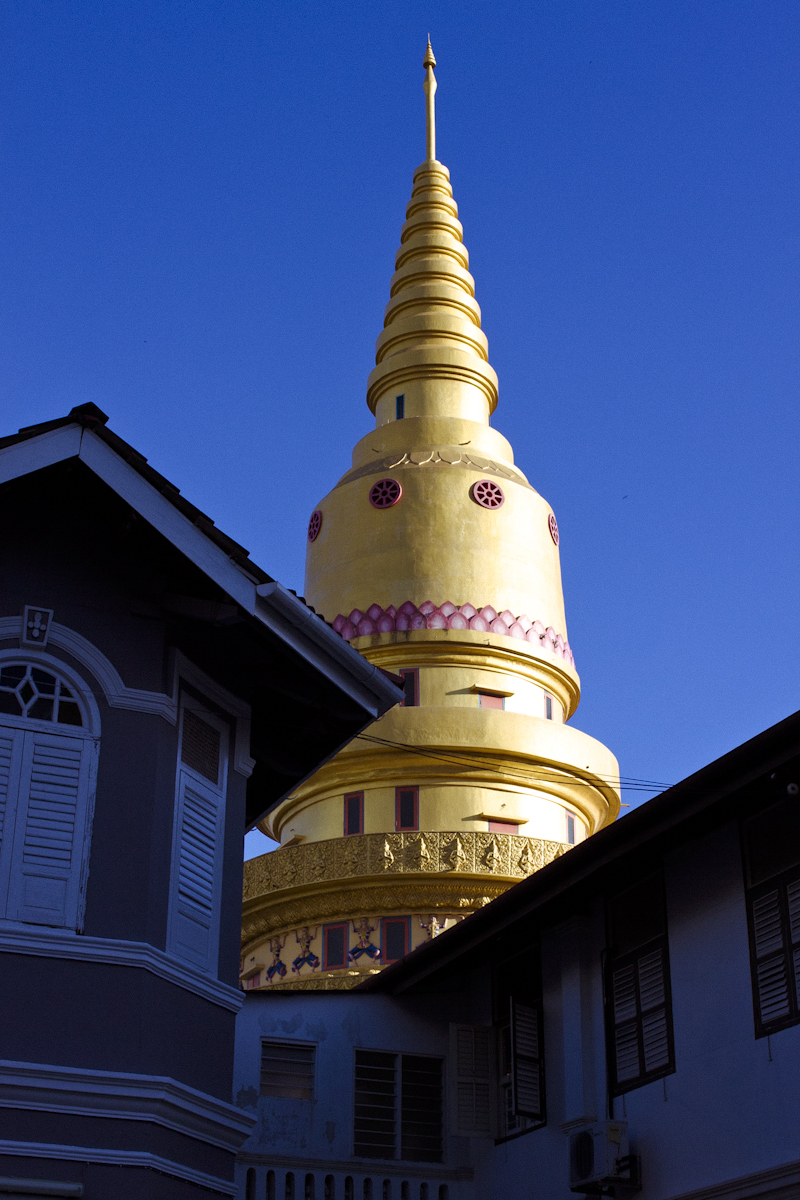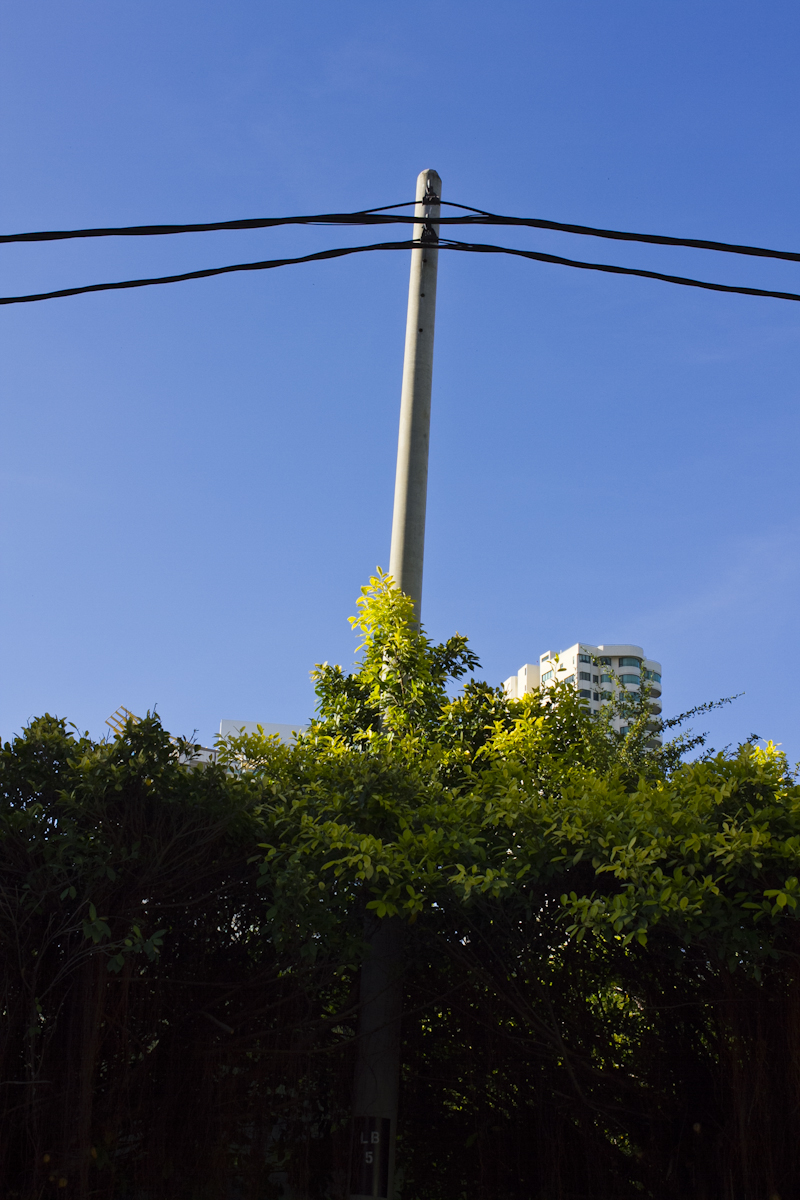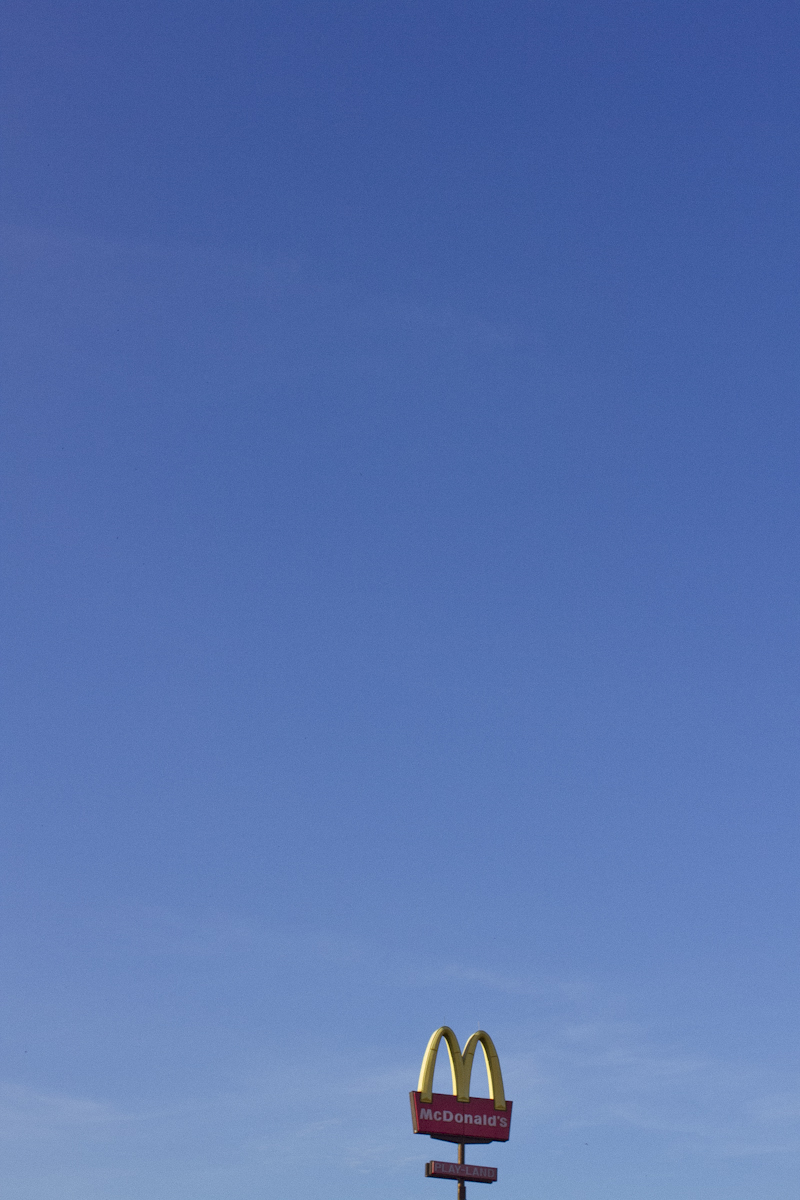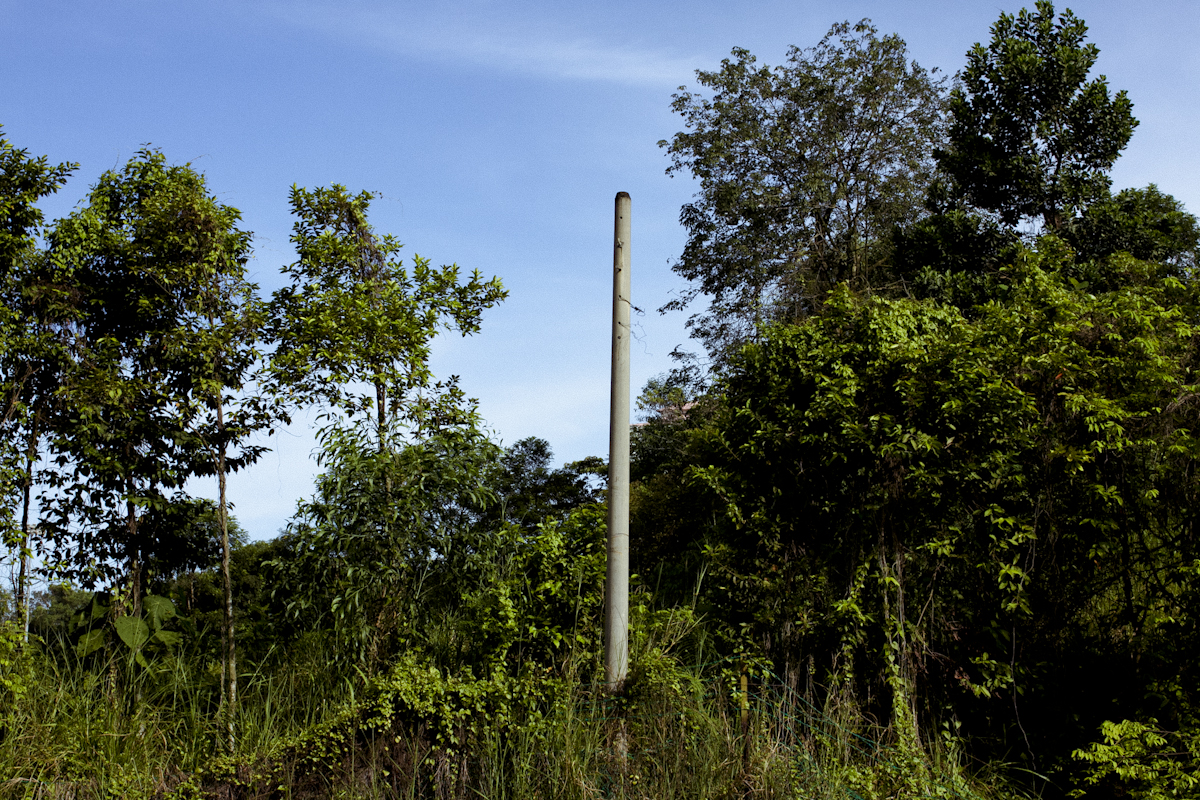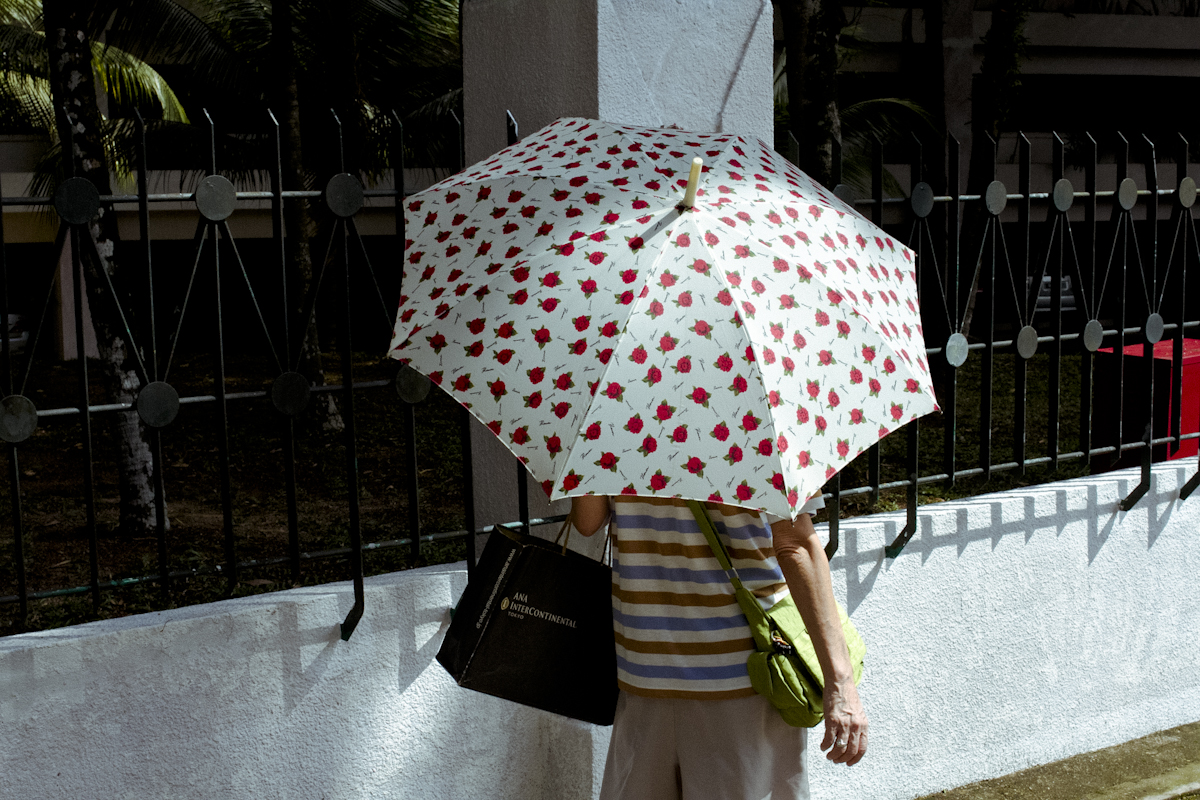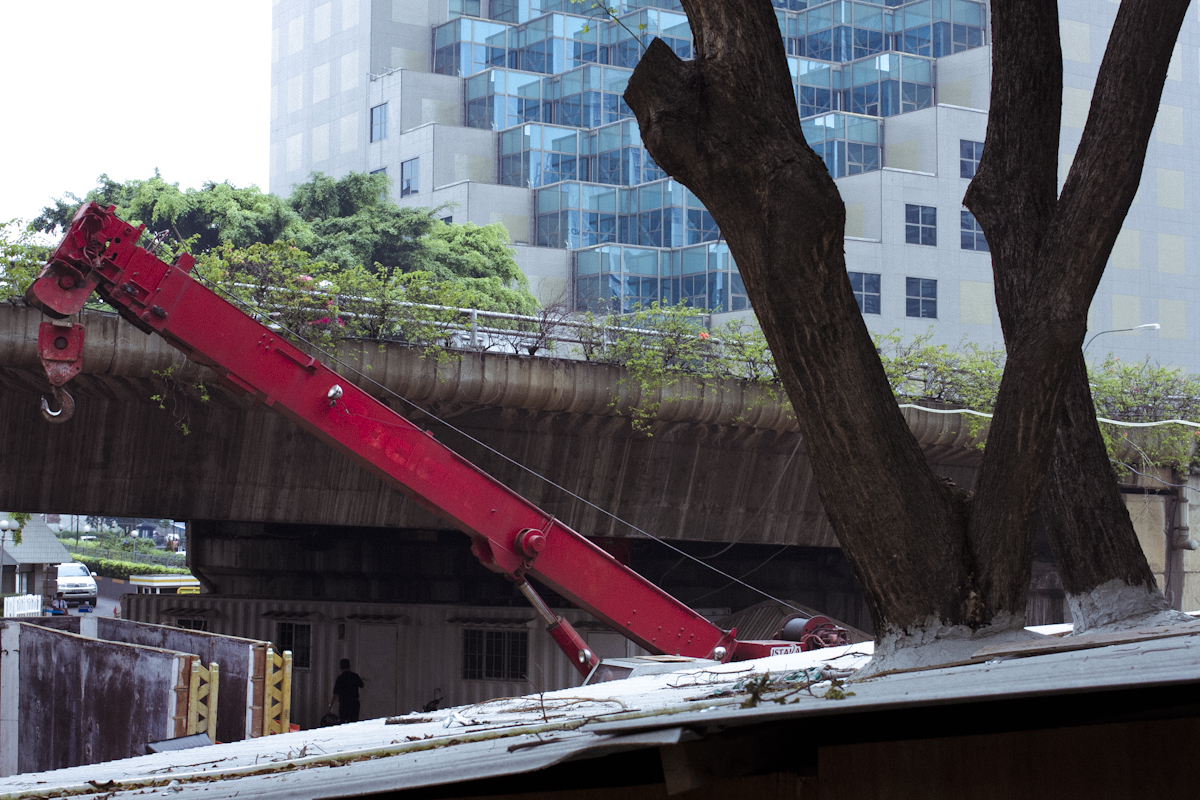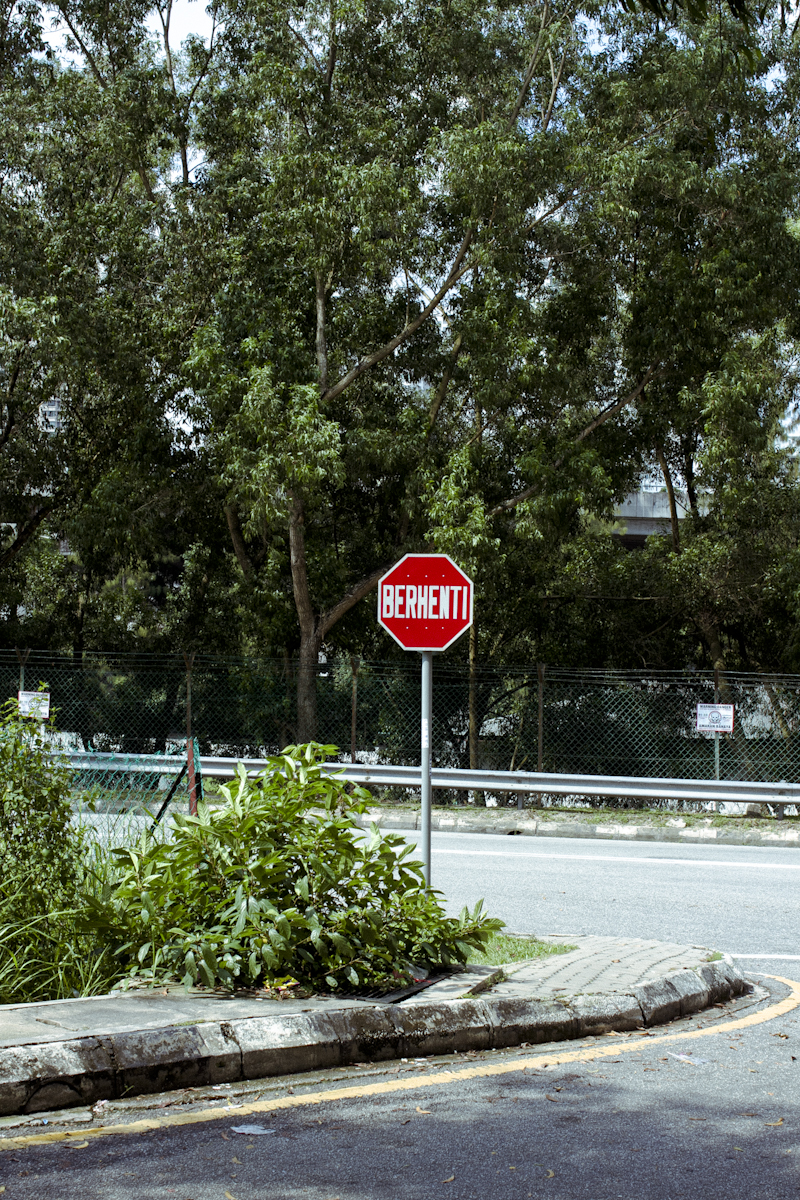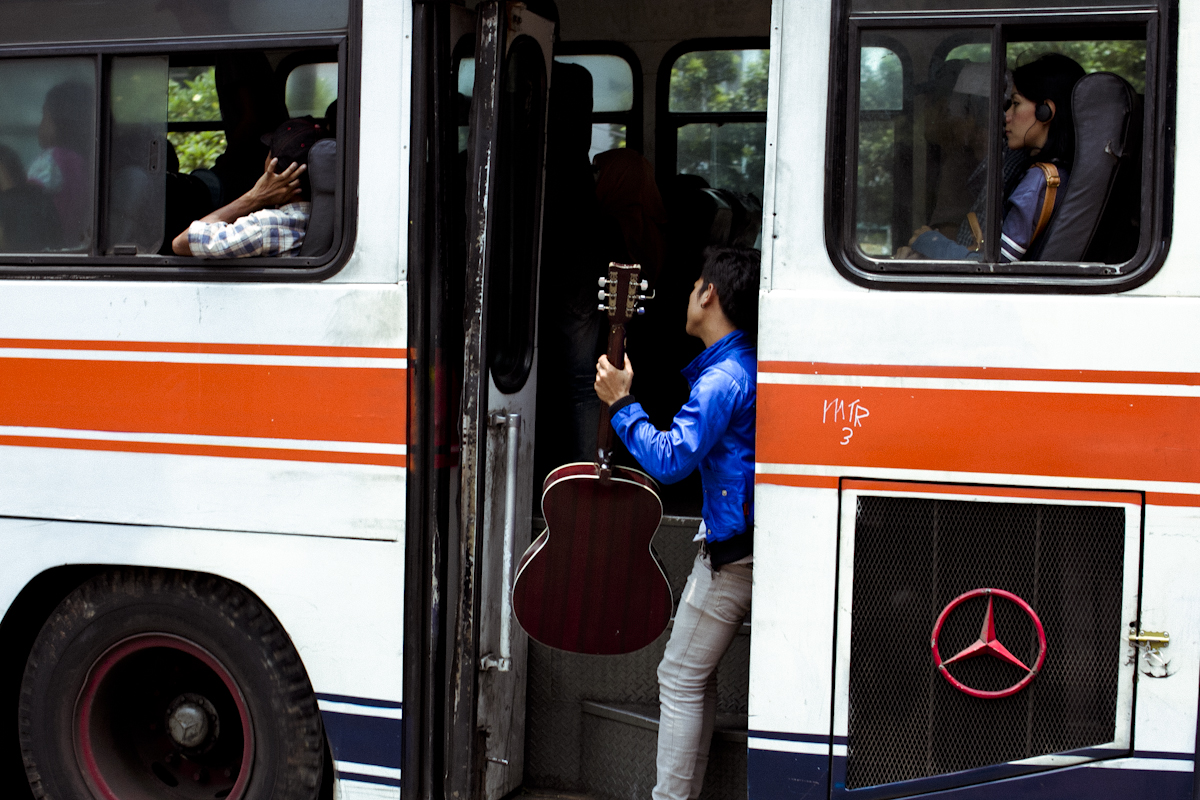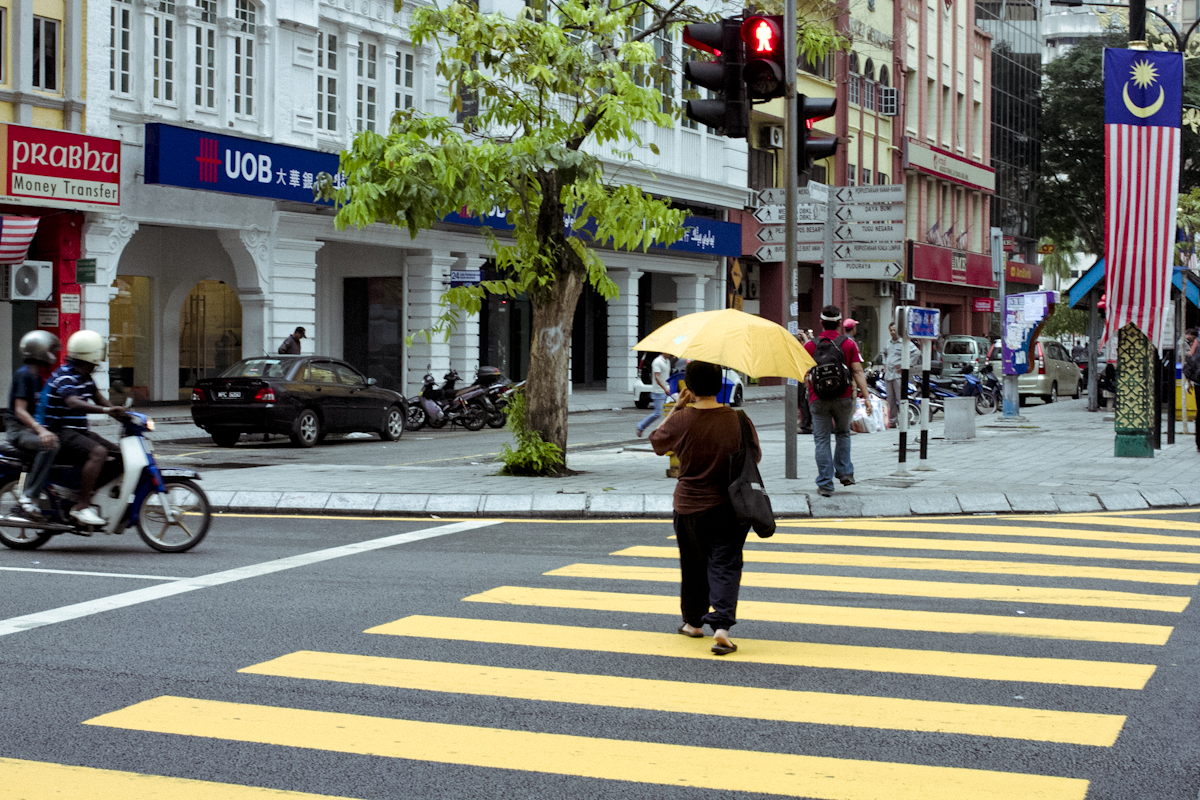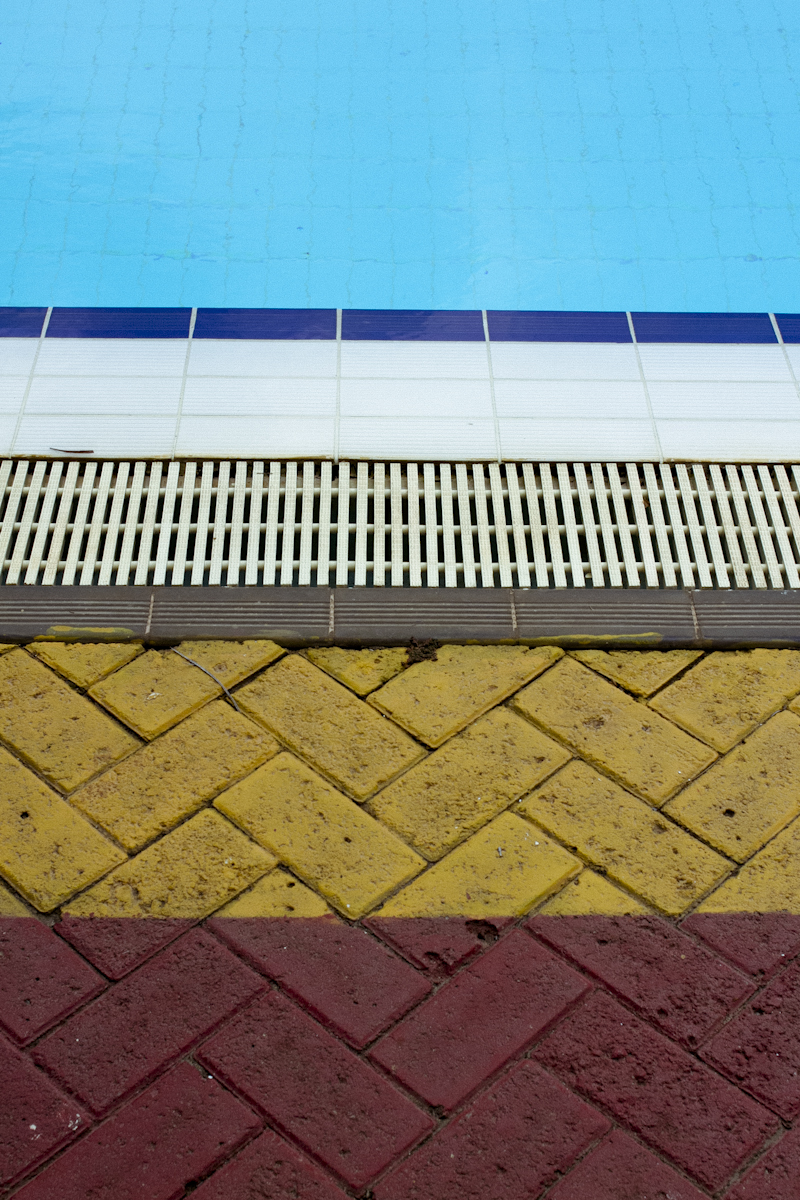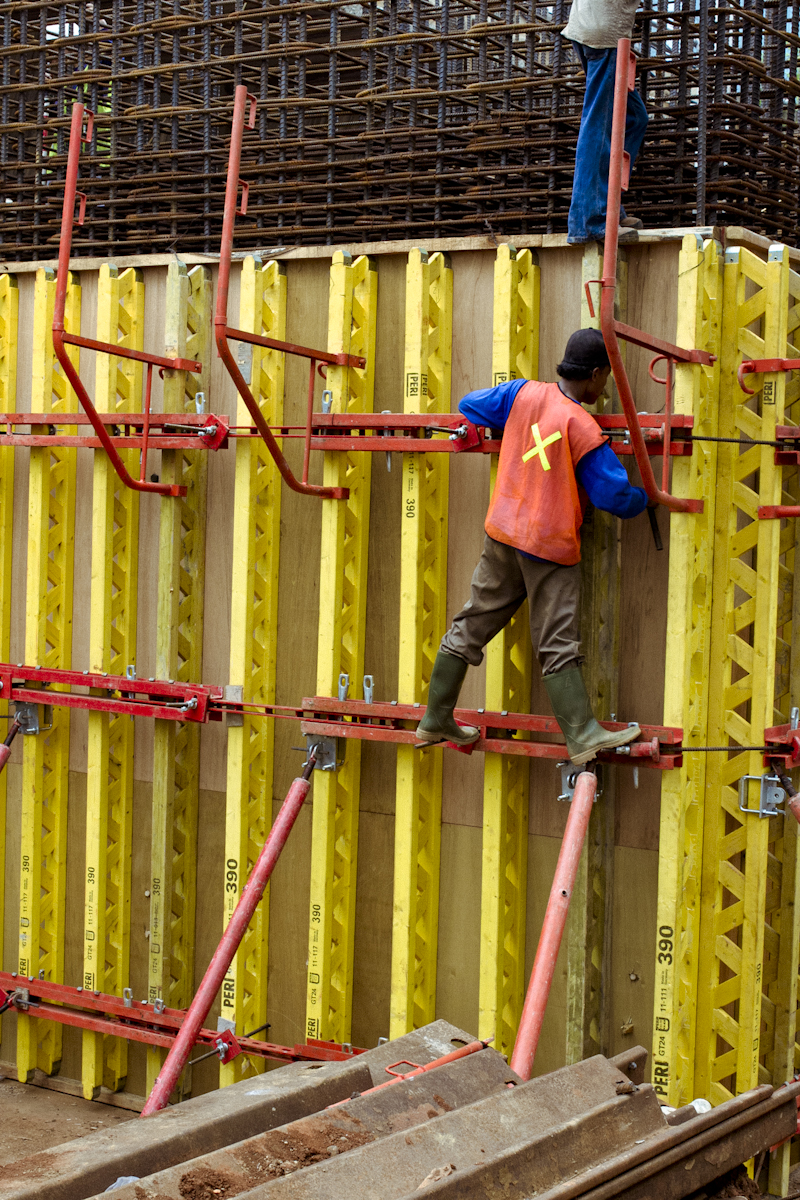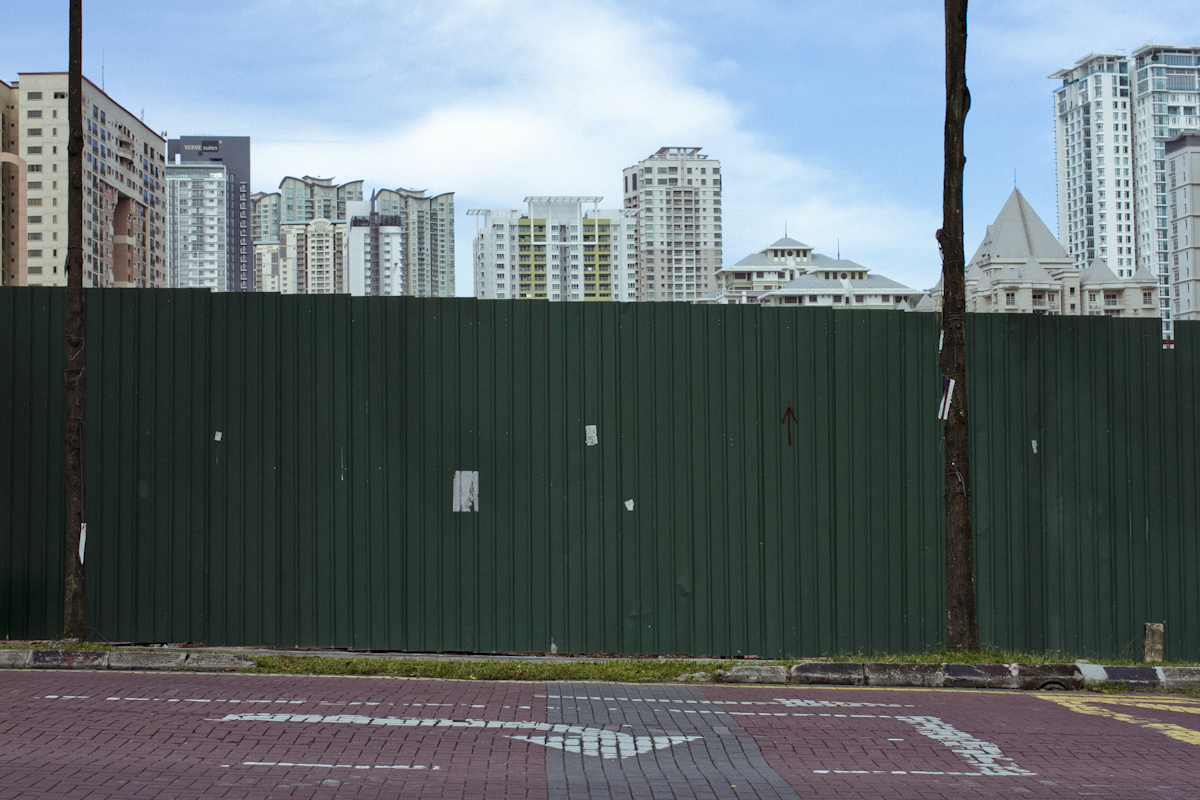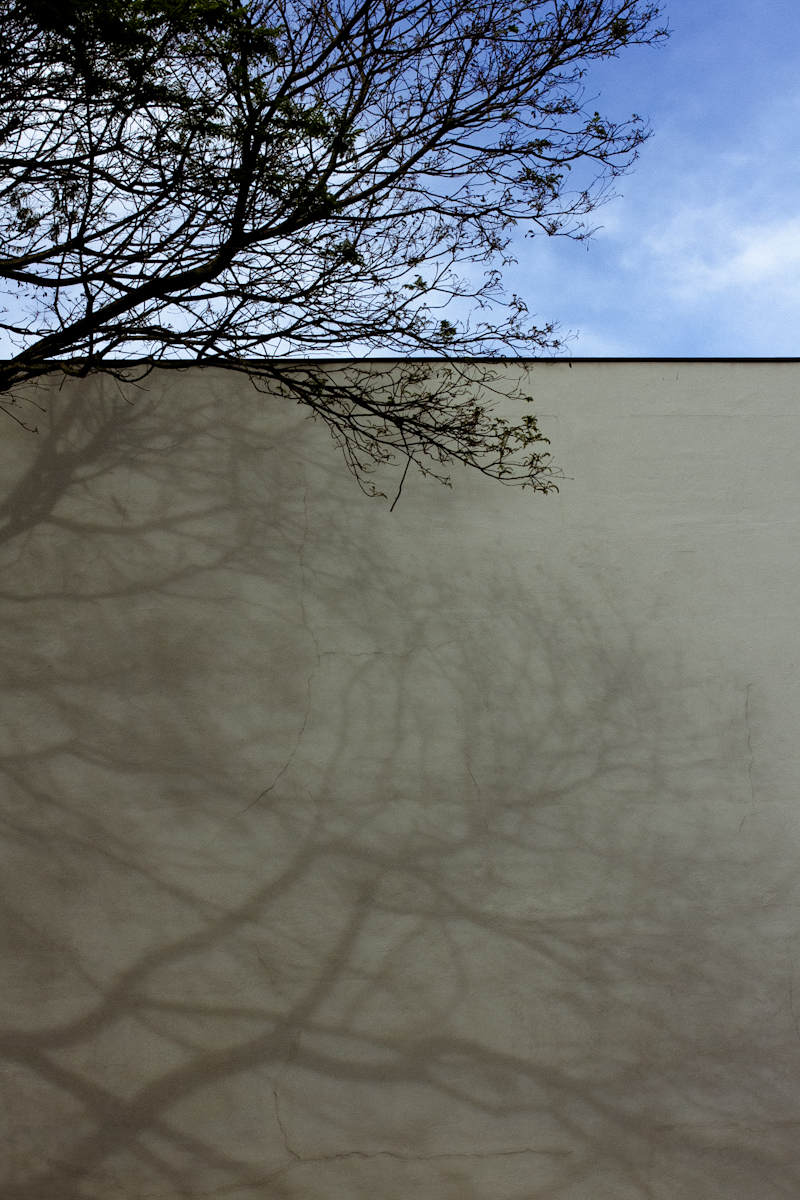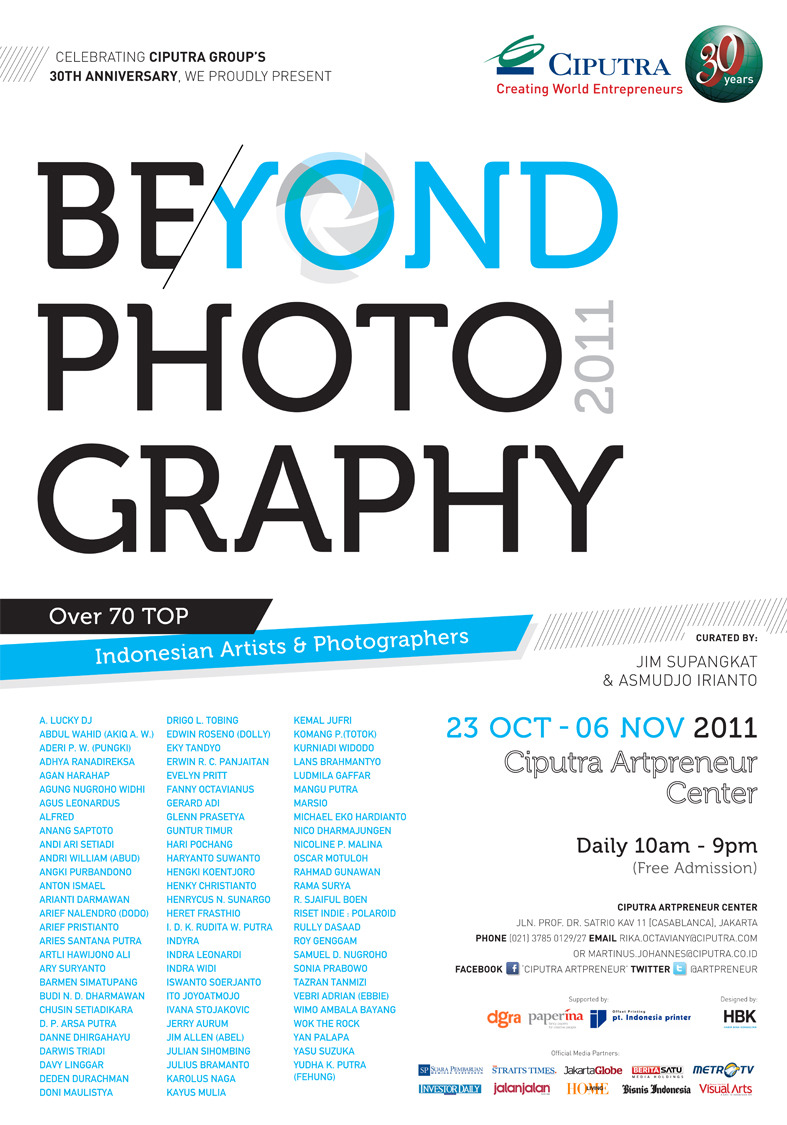I think I will make this a series, and when the material is enough will publish a zine out of it.
Filtering by Tag: Photography
Rapture
Here comes 2015.
At The Gallery
Went out to 3rd Jakarta Contemporary Ceramics Biennale yesterday I never seen the National Gallery to be that crowded to the extent that the volunteer needs to prevent people from entering. Inside I see that the volunteer was very agitated and keep reminding the visitor not to be too close with the object, turns out on that day two artwork is broken.
Re: Award Winning Images from Indonesia
Dear International Photography Competition Juries. It has been a great pleasure for me to see that the images from Indonesia had won an award (again), the latest being the LensCulture Exposure Awards 2013 for the single image category, in which ironically the image was taken by non Indonesian (again).
However it is in my great sadness I should say that I get bored easily by the winning images, not because I live near the action (mind you I am living in one of the 17,000 island here, the action is happening in another island most of the time) but because I feel that the judges often "pick" the same images, from time to time, cough-Pacu Jawi-cough. Of course there is absolutely nothing wrong about picking the images, after all they are indeed beautiful, "showing movement and energy" and best of all promoting Indonesia. But then why do I feel bored? perhaps because more and more photographers are taking the same picture, creating the same similar template and then get picked by the jury again and again, creating a cycle that taught the photographers from the region, if they wanted take picture for the sake of winning a competition or getting as many like as you can from their facebook friends then they should come to Indonesia where the exoticism will hypnotize the international panel of juries.
Andi Sucirta Water Symphony
Let's go back to the winning image from Chee Keong Lim, I am sure that this image has not won any LensCulture Exposure award at any time, however, I am pretty sure that the winning images or similar ones have been taken countless times. This one by Andi Sucirta was taken on 2005, long before Mr. Lim had taken his, based on Mr. Sucitra Facebook post, he stated that he was the one that come up with the concept of this photograph (titled Water Symphony), the image was subsequently winning the SalonPhoto Competition in Batam, Indonesia and few other ones overseas. The image of course like what happened with the Pacu Jawi, drive people from overseas to come to Bali to photograph the scene in Unda River, Klungkung, to the extend that if we search the term on google, most of the image associated with the place are those of Balinese kids playing with water and/or splashing around with bucket. The scene was so infamous that according to Mr. Sucitra, led the kids know that if a photographer wants to make such images, then they shouldn't be doing it for free.
Then what is the point about all these that I wrote? I suppose it was a realization that Indonesia; being the country with the most number of islands, ethnic groups, cultures and traditions in which are transforming slowly by the influx of foreign cultures from the West, the East and the Middle East, a thriving scene of civilization, the biggest economy in South East Asia (was) or basically this place of where the documentary photography tradition could take place and thrive (and even a more contemporary approach) are going to be known for the place where you can take a picture of Pacu Jawi or the kids at Unda River and other countlessly similar exotic images. That realization lead to another one, that most photographers here will become not so keen in pursuing documentary projects or looking forward to make one, because aside from the lack of knowledge, they realize that there is no real rewards in pursuing one, but will wonder in amazement when they saw a foreigner make a story based in Indonesia. So it goes, a classic story that is being repeated from time to time, Indonesia, the land where all the resources are there but the people are not able to savor it, this time it is not about natural resources though.
Of course all of this could be changed, the Indonesian photography scene with their for their penchant for exoticism, are the home of few talented photographers that are experienced and capable of creating a solid body of works. Often however, they are not given the chances, also there are gaps of knowledge or understanding of how photography could be used. These photographers needs to be informed and taught and the easiest way to teach them is not through series of articulated articles or series of workshop (language too, a barrier here), but by promoting more profound pictures from Indonesia which are judged by the merit, not only based on their exoticism or their quirkiness and this can be done by you the juries of many international photography competition.
With that I end my long rants, I do hope you understand my concerns and hopefully my peers would be as well.
Regards
Ridzki.
A Brief Recapitulation.
With regards of the column series that I have written over the course of six months for Whiteboard Journal, I wanted to give a brief recapitulation pertaining what I have written and why I have written it. I was approached by Dinda Ibrahim of Whiteboard Journal one day and she asked me to write a series of columns on Photography, me and her was already part of a writing class tutored by Ayu Utami, each session of the class always feature a lengthy discussion on photography, arts, culture and living with none other Erik Prasetya and Dinda thought that the whole discussion could be summarized into the column series.
Thus the whole structures of column were devised, instead of tackling a new concepts or rather a pretty complicated ones I decided to give my perspective (a modern one, if I may say) on the photography world in general and in Indonesia at some point. My argument is that the photography world has been consisted of these following elements: the camera, the photographer, the photograph, the editor, the gallery and the photobook, and will continue to do so.
The biggest criticism of the columns is that the writings were not comprehensive and didn't touch the deeper layer that some people (photographers) wanted to see but it was deliberate, mainly because of the 700 words limitation and I don't feel that the audience and the critics didn't have a similar understanding.
That aside I am happy that the writings have created a brief debate and people do actually take the time and read it, I hope it could get compiled some day along with other WBJ columns.
For the column you can visit them here:
Catatan Akhir Tahun: Tentang Fotografi Indonesia.
2013 adalah tahun yang sangat amat mengasyikkan untuk fotografi, karena seakan-akan semua yang selama ini berjalan di tempat saja tiba-tiba bangkit dan bergerak secara bersama-sama. Hal ini nampaknya juga ditentukan oleh kekuatan media sosial yang berperan untuk menjadi corong kegiatan-kegiatan hal-hal yang mengasyikkan ini tadi. Tahun ini dipenuhi dengan banyak sekali peluncuran buku baik secara independen maupun dengan metode-metode yang konservatif, walaupun dari segi kuantitas buku yang diterbitkan belum sebanyak di Eropa atau Amerika, namun untuk ukuran Asia Tenggara kita mencatat produktivitas yang cukup baik. Catatan utama tentu saja diberikan untuk peluncuran buku Encounters karya Rony Zakaria, berdasarkan percakapan di artist talk didapatkan sebuah konsensus bahwa buku ini adalah titik tolak pembuktian bagi para fotografer generasi muda dan membuat semacam standar pencapaian baru, baik dari segi teknis pembuatan, penerbitan dan penjualannya buku tetapi terlebih lagi kontennya yang selama buku foto di Indonesia selalu didominasi oleh topik-topik jurnalisme dan coffeetable book. Selain buku Rony, juga ada karya fotografer muda lainnya yaitu Aji Susanto Anom yang meluncurkan buku yang hampir serupa yaitu tentang dokumentasi kota Solo yang berjudul Nothing Personal. Dari rekan-rekan fotojurnalis kita, Safir Makki pun mengeluarkan sebuah buku tentang perjalanan yang dilakukannya di Iran bersama dengan Tjandra M. Amin yang juga mengeluarkan The Colour of Sports, tak lupa pula yang baru saja mengeluarkan pre-order kemarin yaitu Intip karya Roy Rubianto. Sebelum saya lupa, publikasi alternatif The Future of The Past sebuah zine photography analog juga menjadi sebuah pengingat bahwa zine tidak lagi sebuah karya yang diproduksi secara massal dan murah, dengan kerjasama yang baik antar tim dan kedekatan pengguna fotografi analog di Indonesia ini menjadi sebuah publikasi dengan desain dan kualitas terindah di tahun ini.
Selanjutnya dari segi grup atau kolektif, akhirnya Indonesia memiliki sebuah grup yang kira-kira dapat menggambarkan apakah Street Photography rasa Indonesia, Sidewalkers.Asia yang muncul di tahun ini menyatakannya dengan hasil-hasil dari kurasi yang mereka lakukan dan artikel-artikel yang mereka keluarkan. Saya pun berharap banyak dari mereka untuk tahun 2014, mudah-mudahan makin ada gebrakan-gebrakan yang muncul dari pihak SWA seperti misalnya menumbuhkan minat umum terhadap essay photo dengan pendekatan street photography atau pameran kolektif. Tak lupa pula menjamurnya grup-grup street photography yang menggunakan kamera ponsel dan menghasilkan foto-foto yang bisa dianggap sangat baik, diharapkan kedepannya pencapaian visual mereka tak lagi hanya berdasarkan dari fotografer-fotografer luar negeri tetapi juga berani mengeskplorasi kekaayaan visual yang muncul dari diri sendiri.
Anugrah Fotografi Indonesia dan Vision International Image Festival, menjadi catatat tersendiri untuk saya karena saya menyayangkan kurangnya publisitas untuk event yang sangat penting seperti ini. Saya merasa para khalayak umum sepatutnya diberi tahu dan diberi keterangan yang seluas-luasnya agar dapat menggalang dukungan untuk acara ini kedepannya, dan saya berharap pun setelah kita berganti rezim tahun depan masih ada dorongan dari pemerintah untuk membantu mengembangkan dunia fotografi kita. Sangat disayangkan apabila AFI hanya muncul sebagai sebuah acara beberapa jam, memberikan hadiah kepada beberapa nama besar dan tidak ada tindak lanjut dan partisipasi masyarakat, hal yang sama pun dirasakan pada VIIF, baik dari jadwal pameran yang tidak tersedia, waktu yang pendek untuk dapat memasukkan portofolio untuk workshop bersama Francesco Zizola (!) dan pergi ke Bali untuk workshopnya dan hal-hal lain yang seolah-olah membuat kedua event ini adalah event yang sangat ekslusif dan tidak terjangkau oleh khalayak ramai.
Terakhir dari segi pameran, saya sangat bersyukur atas adanya mas Yudhi Soerjoatmodjo yang berhasil merangkumkan arsip-arsip dari Indonesian Press Photo Service dan membuatnya dalam sebuah format pameran dan buku yang sangat bagus sekali. Walaupun buku-buku tentang IPPHOS sudah pernah diterbitkan sebelumnya namun saya merasa ini cukup penting untuk generasi yang lebih muda, karena foto-foto yang ditampilkan dapat menyatu dengan foto-foto sejarah yang selama ini sudah pernah kita lihat sebelumnya. Selanjutnya adalah pameran Dinda Jou Ismail di Galeri Antara, yang berhasil menaikkan derajat fotografi ponsel agar menjadi setara dengan karya-karya yang pernah dipamerkan di Antara sebelumnya. Tak lupa pula dari rekan di Yogyakarta, yang berhasil mengajarkan kepada masyarakat Jakarta bahwa sebuah pameran foto tak perlu lagi mengambil sebuah tema-tema besar, fotografi vernakular masih sebuah hal yang bisa dikemas secara menarik apabila bisa dikerjakan dengan sungguh-sungguh, hal ini dibuktikan pula dengan pameran Dwi Putra yang berjudul Familiar Faces.
Saya kira ini saja yang dapat saya ingat selama tahun 2013 yang bisa menjadi catatan, berdasarkan bincang-bincang dengan beberapa rekan saya merasa tahun 2014 makin banyak lagi hal-hal yang mengasyikkan yang akan terjadi, saya cuma berharap di 2014 makin banyak orang yang mampu memiliki hubungan yang cerdas dengan karya-karyanya, karena hubungan yang cerdas tadi adalah fondasi utama untuk mengevaluasi kelemahan dan kekuatan kita. Saya juga berharap saya dapat melihat lebih banyak karya-karya lain yang muncul di luar kota-kota besar karena itu sistem support yang baik akan menjadi pekerjaan rumah bagi kita semua, dan seperti yang sudah saya utarakan di awal; kekuatan sosial media akan menjadi kunci untuk pencapaian itu.
Pernyataan
Saya rasa ada yang terlewat di fotografi Indonesia baru-baru ini, bukan saya bukan bicara tentang AFI dan para pemenangnya. Walaupun saya harus berkata selamat atas terjadinya AFI dan para pemenangnya, mudah-mudahan di tahun depan kita bisa melihat pemenang-pemenang lain dari luar Jakarta dan bukan nama-nama yang sama lagi yang menjadi nominasi. Saya bicara tentang pameran Dinda Jou Ismail yang berjudul mail-a love letter di Galeri Foto Jurnalistik Antara, pameran dan buku yang seluruh fotonya diambil dari hasil jepretan Instagram si fotografer. Ketika Aik Beng Chia mobile photographer dari Singapura mengeluarkan bukunya Tonight The Streets Are Ours yang diterbitkan oleh Invisible Ph t grapher Asia, saya berkata bahwa ini adalah sebuah statement penting yang dikeluarkan oleh IPA, seolah-olah mereka berkata bahwa kamera itu tidak penting yang penting adalah konten dan isi dari sebuah buku tersebut.
Dalam essay saya yang dimuat di Whiteboard Journal saya menyatakan bahwa kamera tak lagi berbentuk seperti halnya kamera klasik, sebuah ponsel adalah kamera bahkan kacamata pun adalah sebuah kamera pada jaman sekarang. Namun dalam forum yang membahas project seorang kawan yang menggunakan kamera ponsel juga, ada pertanyaan yang muncul dari para fotografer senior "jika kamu punya kamera yang bagus kenapa kamu motret menggunakan ponsel? apa alasannya?" Tentu jika kita menjawab hal ini adalah tantangan buat saya atau bagi saya ini juga kamera, itu kurang dapat memuaskan level intelektualitas dan terkesan kita tidak mengetahui secara dalam tentang diri kita sendiri, namun kita tidak sedang membahas itu sekarang. Yang saya garis bawahi adalah bagaimana para fotografer senior ini menyikapi penggunaan kamera ponsel.
Saya yakin Dinda memiliki kamera yang disebut bagus itu dan saya yakin dia juga mampu mengambil gambar-gambar yang sama dengan yang dia ambil dengan kamera ponselnya. Maka dari itu saya merasakan apa yang dilakukan Galeri Antara jauh melampaui apa yang dilakukan IPA, karena adanya sejarah institusi yang lebih panjang dan orang-orang yang terlibat di dalamnya seperti Oscar Motuloh (yang kebetulan menjadi editor buku tersebut) adalah orang-orang yang satu generasi dengan para fotografer senior tersebut. Terlepas dari fakta bahwa dulu instalasi pameran Yudhi Soerjoatmodjo jauh lebih kontemporer, namun itu tetaplah karya fotografi yang tidak diperdebatkan lagi, kali ini Antara telah melampaui itu dan membuat statement yang sangat keras, bahwa karya fotografi dengan ponsel adalah karya fotografi yang mampu bersanding dengan karya yang pernah ditaruh di dinding-dinding Galeri Antara.
Maka dengan itu perdebatan telah selesai dan mari kita melangkah kembali.
Beasiswa Workshop Penulisan Kritik Seni Rupa dan Budaya Visual ruangrupa 2013
Fotografi selain dianggap sebagai sebuah karya jurnalistik dan dokumentasi juga dianggap sebagai sebuah karya seni oleh para pelakunya. Melihat kembali perayaan Waisak di Borobudur kemarin telah sekali lagi menyadarkan saya bahwa medium ini, tidak atau sangat kurang sekali memiliki para kritikus yang kompeten di bidangnya, padahal hampir seluruh lapisan masyarakat adalah fotografer pada zaman sekarang ini.
Kebanyakan para fotografer yang terkadang -sama seperti mediumnya- terlalu demokratis dapat dengan mudahnya menilai dan mengkritisi karya-karya mereka dan karya-karya yang lain dengan cara-cara yang superfisial seperti menyatakan bahwa yang tajam itu indah dan yang kabur itu buruk. Maka dari itu saya memohon kepada segenap teman-teman saya yang memang sudah saya ketahui memiliki kemampuan dan pengetahuan akan fotografi untuk mencoba mendaftarkan diri untuk mencoba mendapatkan tempat dalam workshop yang diadakan oleh ruangrupa ini.
Bagi mereka yang tertarik mendaftarkan diri dan merasa ingin menjadi kritikus foto saya coba tawarkan sebuah beasiswa untuk satu orang, jika anda terpilih maka biaya workshop akan saya bayarkan lunas tetapi dengan syarat selama 1 tahun ke depan setelah workshop ini anda harus membuat sebuah tulisan-tulisan yang memunculkan ide-ide baru atau tulisan-tulisan kuratorial untuk pameran atau bergerak memajukan fotografi Indonesia, semua ini diharapkan dilakukan dalam ranah publik dan dapat dipertanggungjawabkan.
Kepada yang tertarik diharapkan menghubungi saya di alamat email a.ridzki[at]gmail[dot]com, kepada yang lain saya harapkan dapat menyebarkan perihal ini ke khalayak umum atau orang-orang yang menurut anda mampu dan mau belajar menjadi kritikus foto.
Terima Kasih.
-----------------------------------------------------------------------------------------------------
Ruangrupa kembali membuka pendaftaran untuk mengikuti Workshop Penulisan Kritik Seni Rupa dan Budaya Visual, setelah sebelumnya diadakan sejak 2008. Workshop ini ditujukan kepada penulis muda yang memiliki minat terhadap penulisan kritik seni rupa dan budaya visual secara umum. Peserta workshop akan diseleksi berdasarkan tulisan-tulisan awal yang dikirimkan serta proposal proyek penulisan kritik seni rupa dan budaya visual yang akan dilaksanakan setelah selesai mengikuti workshop ini, beserta syarat pendaftaran lainnya. Hasil akhir dari workshop ini berupa pengelolaan situs jarakpandang.net oleh para peserta workshop, sebagai situs berisikan tulisan-tulisan kritik seni rupa dan budaya visual. Para peserta akan dilibatkan dalam proyek penulisan kritik seni rupa dan budaya visual di jarakpandang.net secara berkala. Selain itu, tulisan-tulisan tersebut akan dimasukan ke dalam proyek buku jarakpandang.net yang berisi tulisan-tulisan kritik seni rupa dan budaya visual dari para penulis muda, yang dihasilkan dari workshop penulisan ini sejak pertama kali diselenggarakan.
Workshop ini akan dilaksanakan di ruangrupa, Jakarta, 17-28 Juni 2013.
Persyaratan pendaftaran:
- Usia peserta antara 19 – 30 tahun
- Mengisi formulir pendaftaran online di bawah ini.
- Mengirimkan 1 buah proyek penulisan dalam bentuk proposal (lihat formulir pendaftaran)
- Pendaftar yang terpilih membayar biaya workshop sebesar Rp. 500.000,-
- Biaya perjalanan peserta (travel/kereta/pesawat) dari luar Jakarta, ditanggung oleh masing-masing peserta.
Catatan:
- Pengisian formulir pendaftaran online selambat-lambatnya pada tanggal 9 Juni 2013.
- Peserta terpilih akan diumumkan pada tanggal 13 Juni 2013, melalui website ruangrupa dan jarakpandang.
Untuk informasi lebih lanjut silakan hubungi ruangrupa di:
Telepon : (021) 830 4220 Situs : ruangrupa.org | jarakpandang.net E-mail: jarak_pandang@yahoo.com Facebook : Jarak Pandang Twitter : @jarakpandang
Tautan terkait: http://jarakpandang.net/blog/dibuka-pendaftaran-workshop-penulisan-kritik-seni-rupa-dan-budaya-visual-ruangrupa-2013/
Why am I Excited About Bungkus and Why You Should be Too
Few months back I attended Bungkus Vol. 2 presentation which was held in Bandung, for those who isn't familiar, Bungkus is a bi-monthly Photography zine from Bandung and the theme for volume 2 is aptly titled "Journey". I had a few talks before and after the talk with the founder of Bungkus; Sandi Jaya Saputra (Useng), Gyaista Sampurno, Sari Asih and Arif Setiawan as well as the participant of the second volume of Bungkus to get the idea of what are the things that they wanted to achieve, why Bandung specifically and how's the future of Bungkus looks like.
From the conversation I kinda get the idea that Bungkus is a little bit different from the other platform existed in this country, even though they are the latest who announce themselves. They already had their mission, their roadmap to go along and what are they trying to make Bungkus of in the future. This is made possible because Bungkus is managed by people who are experienced and educated in the fine art and/or photography, they also had the experience of working in a collective thus ensuring its sustainability (Thank you Rony Zakaria for this input). I have to make note though, a collective might not be a correct term however to call them just a zine is an understatement as well.
So why Bungkus and why Bandung?
Like any other collective it is started out by meeting of some close friends and colleagues, shared some ideas over drinks and suddenly it was born. What makes them different is; instead of focusing the collective around themselves, they wanted to focus on the photographers from Bandung, who made their project in Bandung or outside Bandung OR Non-Bandung Photographers who made the project inside Bandung. The reason is simply that they wanted to put Bandung Photography on the map (Bandung is already well known for their creative athmosphere and the birth of several art movement)
Bungkus started distributing the theme into the internet via facebook (first is called Home, second is Journey and the third theme is History), the editor would set the deadline and then ask the participant to submit at least 20 pictures depicting their interpretation of the theme. Over the submission period the editors would release several ideas of how other photographers interpret the theme. Once the submission is collected then they would start to select the works and try with the photographer to edit the work down to 20 pictures. Once it's all final, then a slideshow would be set up and generally it's a presentation night with a lot of Q and A Session.
Now here's my thoughts on the current model of of the Bungkus.
The first thing that I noticed when I watched the slideshow is that there's a clear gap between the people who understand editing (usually the editor of Bungkus) and the people who doesn't, and in between there are people who use the most basic sequencing, that is to sequence it chronologically. When I confirmed this, the editors did said that the presenter is the one who fully responsible in sequencing the photograph, with little or no help at all from them. I personally thought if this were to continue, the presentation at would mostly be consisted of half baked slideshows that needs more touch. I also noticed that some of the photographers are sometimes not sure why they selected certain pictures to be incorporated in their slideshows.
But I suppose it's about to change, for "History" the editor had decided to prolong the deadline of the submission as well as conducting a seminar session with Primanto Nugroho to dissect more of a perspective pertaining "History", this albeit only a few hours discussions and presentation would still throw in ideas to the photographers on how to approach the theme.
It was already exciting to see how people interpreting the theme and putting their own personal touch which came up as a photography presentations on the second volume and it will be getting more exciting in the future with the addition of the seminar and the prolongations of the deadline. Looking at it I personally believe that there are more to come from Bungkus, especially if they decide to educate photographers on how to create an essays or by the least to sequence photograph for presentations.
With that I conclude by inviting those who are interested to come to Bandung on 2nd March 2013, to watch how the photographers interpreted "History", I bet that there would be some interesting work to be watch.
Bungkus Volume Three: History Presentation will be held in 2 March 2013, starting at 18.30 at Kamones Workshop & Gallery, Jl Cigadung Raya Barat 28A, Bandung
For more information please kindly visit their Facebook Page here
Post Foundry Notes: South East Asian Photographers, Our Countries as Working Grounds and The Future.
This notes are to explore the questions that I had developed during the Foundry Photojournalism Workshop in Chiang Mai, August 2012. This is not an attempt to criticise or making an fuss rather this is my personal opinion and rants as based on the conversation that I had with certain people and the observation during and after the workshop. First thing that I noticed when I arrived to meet my fellow students in Chiang Mai is, where the hell are the South East Asian Photographers?
Fotografer.net (Indonesia) may boast that they are the biggest photography forum in South East Asia (SEA) however, there are only three photographers from Indonesia joining in, myself, Arif Setiawan (the scholarship recipient from Bandung) and Dilla Djalil-Daniel (Foundry alumni), Bea Wiharta (Reuters Photographer) is supposed to join us but he had a sudden assignment . Given the fact that Foundry was being announced at the end of 2011 the number of people who showed up is dissapointing, for other SEA countries it was slightly better although the names that showed up are established photographers that has previously exposed to similar workshop namely the Angkor Photo Workshop or others.
Malaysia had around 5 people on board, Singapore had 3(?), Brunei none, East Timor none, Cambodia none, Vietnam had 3, Burma had 3-4, Lao PDR none.
This is dissapointing for me .
"Oh it is expensive". Not really though, Foundry was announced at the end of 2011 and only conducted in August 2012. That means 6 months period of saving your money and given the fact that a lot of photographers nowadays are the growing middle classes, I don't see why is this the reason.
The low turnout can be argued that documentary photography and photojournalism was quite a niche in the genre, it has even see decline even in the western world as spoken by Alison Morley (ICP). But isn't the possibilties of getting mentored by the biggest names of photojournalism, meeting like minded people in an exotic place and building connection is enough to excite people?
South East Asian Photographers and Our Countries as Developed Market.
Read up David Alan Harvey; (Magnum) conversation with James Estrin; (NYT Lens Blog), on BURN Magazine, they are stating that how becoming a photographer today is one of the best days of becoming one because never was in history that we have unlimited access to almost every people in the planet through internet and how this opens up to new possibilities that was never imagine before. Below is the excerpt of the interview.
JE: And I love that kind of photography, and working for a newspaper. I happen to really like working for a newspaper, but what I am saying is that it has never been an easy profession; it’s a myth that it was easy twenty-five years ago.
DAH: Yeah, that’s bullshit.
JE: I don’t know about forty-five years ago, but I know about thirty years ago and it was not easy!
DAH: No, it was not easy and it seems easy to the young because they see us a certain way and they forget that it wasn’t like that really. Every generation has to build their own thing.
JE: And so for all the challenges which young photographers face, and they do face serious challenges, I am not making them smaller than they are, there are also tremendous opportunities that didn’t exist then that do now.
The similar sentiment was mentioned as well by Henrik Kastenkov (Bombay Flying Club) in his seminar session during Foundry albeit in a more confusing manner to some. He was stating in the age of the Internet, one only need to make a great work, promoting it and make a business model out of it to survive. Everything else is already there; the audience, and the manners of which you reach your audience.
That is the general condition of the photography world, now let's dig up what are the other conditions that we have as a SEA Photographers:
- All the big names (publishers, contests, workshops, etc) are still very western oriented and viewed in a western perspective, only a handful are SEA native.
- Established and up and coming western photographers are existing in the SEA market as well and they are being assigned and commissioned to go to the SEA.
- SEA photographers have more limited resources as opposed to the rest of the Asia or Western world (funding, knowledge).
- "SEA is no longer a developing market, it is a developed market" ~ Ashley Gilbertson (VII). A statement that I have found to be somewhat true.
- The number of people who owns camera are increasing exponentially, to the point where photography is a more democratic process than general election.
- Crowdfunding method existed, however it was not popular among the SEA native, as far as I can remember one filmmaker is using the method to fund her works and my friend is using one as well to fund his. I don't know whether SEA photographers are comfortable on using this as a platform to fund their projects.
Let's relate this to the writing that I had earlier; we had the people, we living in an age where information is achieveable in a few clicks, it was never been easier to publish work than ever, our region is a developed market and many more. However somehow, we can't realize that we live in this golden age of photography. People are rather stuck with trivial matters, what aperture, what shutter speeds, what lens, rather than discussing in depth where is my photography going and how can you make yourself better.
So there, my observation, would this condition are going to be improved in the future? I don't know, but if people are still staying in the bubble, thinking that photography are only about gears, bikini clad girls, HDR landscape and human interest without going in depth and creating quality work, I can guarantee that we are not going to move much from where we are now.
With Regards to Occupation and Passion
When I start my job as a monitor, I didn't only like it but also thought this is the best job that I could have landed; I get enough salary to save some money, travel in a frequent basis, meeting new people, good learning program, career ladder and opportunity and the best thing is I believe that I took part in enhancing the better life of mankind. In short it was a work worth doing. Several years after I joined the company, I kinda get the idea how certain things works and from time to time I get bumped or stuck by the bureaucracy (in which I personally think that it is necessary). These are the things that finally wears thin of my passion in working and this happens right when I am in the middle of the process of moving to another country. On the other hand, when I was first started with my work, I bought a camera. Mind you I'm not that artistic person (can't sing, dance,paints or play musical instrument) and my encounters with this light capturing devices is for the sole sake of documenting purposes (for the records I shoot film back in the days but I'm fully a digital person now). My relationship with the camera and my work then began, I've begun to take photography lesson on my own, reading the resources off the net, applying everything that I could get my hands on to the extend that I begin to work in my spare time as a freelancer.
Over the years my relationship with photography have evolved, I've not only respected this instrument on my hand as my the extension of my eyes but also as a medium to express myself. This evolving relationship if I may say, have made my work evolved at some level as well, however I still keep my jobs at the utmost level, thinking that I still do a work worth doing.
Then it struck me, through a series of events. I felt that the job that I've given so much attention is merely a work, nothing else. At the same time I need to go outside of town to monitor in a site, I take an earlier flight a day before to explore the city because I've never actually went to this place. I bring my camera with me, exploring the city and just taking pictures. The next two days I was busy with my monitoring and I can only check my pictures when I was back at my place, after I check the pictures I was intrigued by what I get (not all, but you get the point right?). The pictures that I took that day led to another conclusion in my life and another evolution to my work.
I've concluded that I would move to this another country for photography's sake. To shoot more, to attend workshop more, to get my hands on photography books more in which in the end to evolve my (photography) works more. That doesn't mean that I will clumsily do my day to day job from now on, no of course not, I will still have high regards of my professionalism. It's just that my priority is different and because of that I am happy now.
Penang, January 2012
The Middle Finger
More Banality
Photography Links for The Week of 28 October 2011
This week we have more content from Indonesian Photography scene! A glimpse of China and concern about the new breed of conflict photographers. We also take how small documentary could make an impact and raging debate on what age are photographers does their most influential works.
- What to Wear for an Indonesian Royal Wedding via Reuters Blog
- Great Mistakes: Vanessa Winship via The New Yorker Photo Booth
- Commitment to Stay: Ayman Oghanna’s Promise to Iraq via The New Yorker Photo Booth
- Lars Tunbjörk via The New Yorker Photo Booth
- 21st Century China via The Atlantic in Focus
- The Dreams and Delusions of Photographers via LPV Magazine
- Photographing Conflict for the first time via Lens
- Ziyah Gafic: A Forensic Documentary of Genocide via Photo District News
- I Can't Stop Loving You via DuckRabbit
- At What Age Do Photographers Do Their Most Influential Work? via Little Brown Mushroom
- What Happened With The Mid-Career Artists? via Conscientious
- A Conversation with Matt Eich via Conscientious Extended
- New Sin and Salvation in Baptist Town, May 2011 via LUCEO Blog
- Chicks With Guns Photo Book Doesn’t Disappoint via Wired Raw File
- Reminders Project Asian Photographers Grant Finalist #3: Andri Tambunan via Invisible Ph t grapher Asia
Road Trip
Photography Links for The Week of 21 October 2011
All right this week we have some animal portrait, books and portfolios. We also still have interview and news (hint: Tim Hetherington on Magnum) and finally an advice from Indonesian NGT Photographer Hafidz Novalsyah. So kick back, relax and enjoy.
- Studio portrait of big, brainy octopus via The New Scientist
- This Week In Photography Books via A Photo Editor
- Sebastian Liste-Urban Quilombo via Burn
- Moonlight Yemen by Lorenzo Meloni via Burn
- The Photograph of Keith Davis Young via Daily What Not
- Never-Seen: Hells Angels, 1965 via Life
- A Decade of Winks and Winces via Lens
- As Water Rises, There’s No Place Like (or for) Home via Lens
- Peter DiCampo: The Pajarito Mesa – An Energy Case Study via This is The What
- 10 minutes with Saverio Truglia via This is The What
- A Conversation with Ute and Werner Mahler via Conscientious Extended
- A Conversation with CPC 2011 Winner Yaakov Israel via Conscientious Extended
- Outer Space: Thomas Ruff’s Altered Reality via Times Lightbox
- Elliott Erwitt: Sequentially Yours via Times Lightbox
- Subterranean, Homesick, Alienated via T Magazine
- A Good Man is Hard to Find via The End Starts Here (Rodney Smith)
- [Patut Diberi Salut] Hafidz Novalsyah: Membingkai Dunia Dengan Rasa dan Keyakinan via MALU
- An American Tourist in North Korea via RAW File
- Split Legacy: How did Magnum Photos come to represent Tim Hetherington's work? via British Journal of Photography
This is Massive
Apparently there will be three photography exhibitions next week in Jakarta and each opening is in the span of three days to make it more interesting one of it is actually "The Biggest Photography Exhibition in Indonesia" ever. First we have Martin Westlake "Eastward" Exhibition in Dia.Lo.Gue Artspace, Kemang.
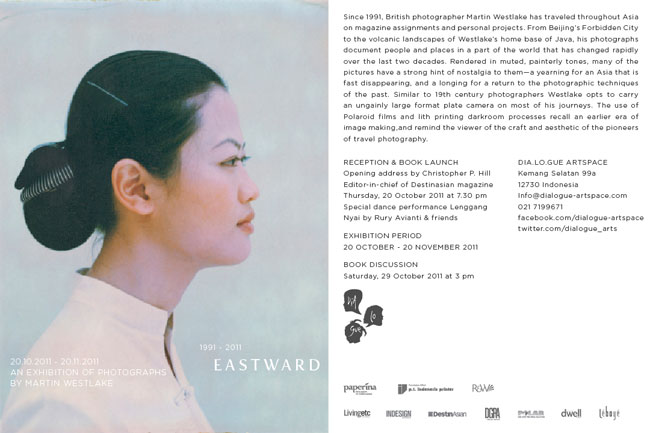 Then "Indonesia: A Surprise" a parallel exhibition in Galeri Salihara and North Art Space in Ancol.
Then "Indonesia: A Surprise" a parallel exhibition in Galeri Salihara and North Art Space in Ancol.
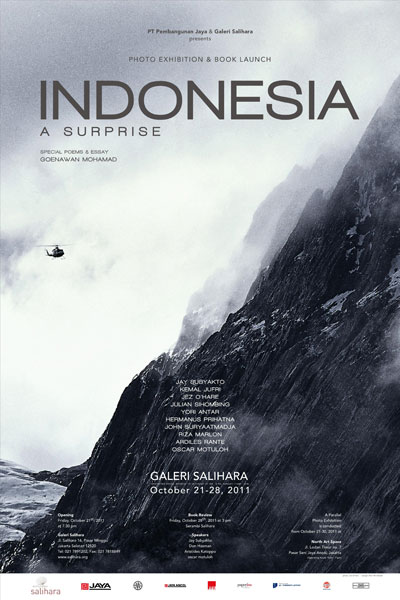 Finally the biggest of them all "Beyond Photography" in Ciputra Artpreneur Center.
Finally the biggest of them all "Beyond Photography" in Ciputra Artpreneur Center.
Photography Links for The Week of 14 October 2011
So this week we have advice on what to be put on your website, a questions about what can you achieve when you're intimate with your subjects, interview with Matt Weber question whether do we still needs photobooks or not and many more.
- Great Compositions-Henri Cartier Bresson via Adam Marelli
- ICONATOMY by George Chamoun // A Journey Through Time via Yatzer
- Alec Soth – La Belle Dame Sans Merci via The PhotoBook
- Yakuza – getting under the tattoos via DuckRabbit
- Photographers, Your Website Design Needs More Substance — and Less Flash via Black Star Rising
- Matt Weber – “I’m just shooting my way through life” via Street Reverb Magazine
- Uniform_Code by Jim Allen Abel via Kantor Berita Mes 56
- Sander Meisner photographs the sleeping infrastructure of the urban environment via Feature Shoot
- Kyoko Hamada: A Letter to Fukushima via The New Yorker Photo Booth
- Photographing the Great Recession, Looking Back to the Great Depression via The New Yorker Photo Booth
- World Press Photo Masterclass in racial stereotyping? via DuckRabbit
- Colombus Day Discovery via Blake Andrews
- How Much Is A Picture Worth: Part Three via Rodney Smith
- Why Does Everyone Think They Need A Photo Book? via A Photo Editor
- Why Does Everyone Want a Photobook? via Conscientious
- Preview this photo magazine - and then read the real thing via Conscientious
- Marc Davidson - Saudade via Burn Magazine
- A photographer's view: how I moved from film to digital via The Guardian Camera Club
Photography Links for the week of 7 October 2011
Well this is a new series on the blog, I will post some photography links that interest me and hopefully can be enjoyed by the masses as well. It will be posted hopefully everyday weekly (every Friday) at 17:00 GMT +7 timezone (that's Indonesian Timezone)
- Nikon Small World 2011 via The Atlantic in Focus
- Animals in the News via The Atlantic in Focus
- An Eye-Opening Look at How Many Conflict Photos Are Staged via PetaPixel
- “Photographer Looking For People to Do Their Job Without Pay” via PetaPixel
- Babies Sleeping in Grown-Up Clothes via PetaPixel
- An Interview with Garry Winogard via American Suburb X
- ‘Exploded flowers’ photographed by Fong Qi Wei via Feature Shoot
- IPA Street Photography Workshop 12-13 November 2011 via Invisible Ph t graphy Asia
- Border Realms: A Ghostly Ruin in Thailand’s South via Times Lightbox
- The Science of Awkward: Human Interaction in America via Times Lightbox
- 10 minutes with Van Ditthavong via This is The What




